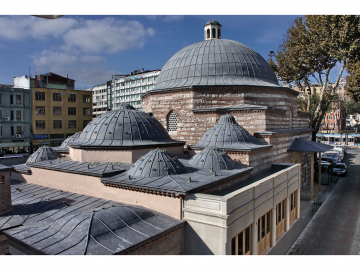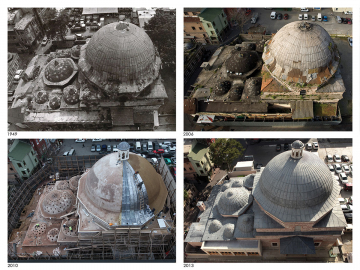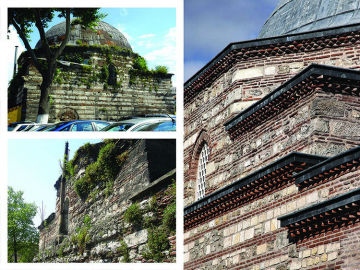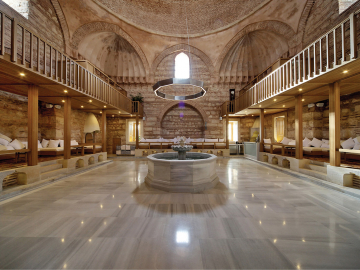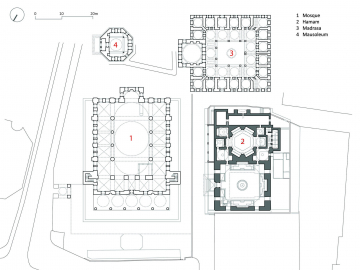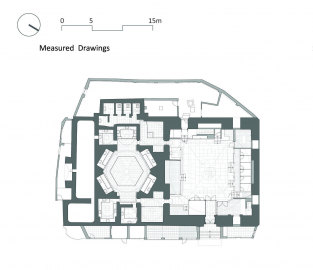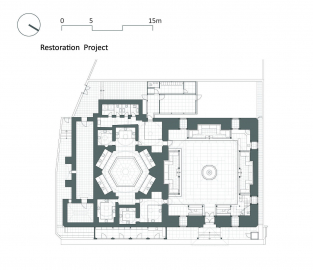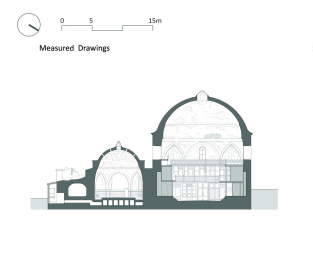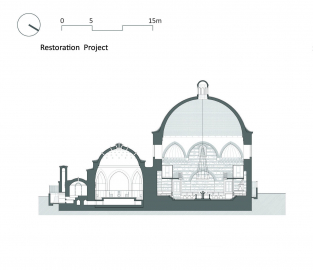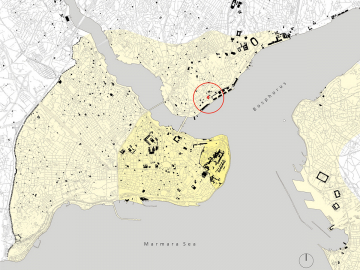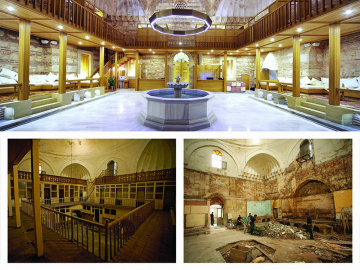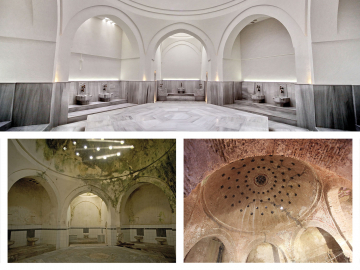Kılıç Ali Pasha Hamam
As the physical manifestation of a unique period in the historical harbor of the Ottoman imperial city, the Kılıç Ali Paşa Hamam has become part of public space again in the Tophane area after its restoration and re-opening as a public bathhouse.
The Kılıç Ali Paşa Hamam was constructed in 1580 by Master Architect Sinan, on behalf of Ottoman Admiral Kılıç Ali Paşa as part of a larger ‘külliye’ complex, in the Tophane district of Istanbul. As the physical manifestation of a unique period in the historical harbor of the Ottoman imperial city, the Kılıç Ali Paşa Hamam has become part of public space again in the Tophane area after its restoration and re-opening as a public bathhouse. 430 years of layered materials and debris, literally ‘embalming’ the surfaces and ‘burying’ the structure had to be removed in order to identify the original building, thus relinking this historical monument back to its origins. This project is of exceptionally high restoration quality, in terms of its successful use of original materials and techniques, its innovative integration of new building technologies, and overall construction quality.
The objective of this restoration project was to both reinstate the structural, material and formal characteristics of the original Sinan period architecture that was lost across centuries, and to simultaneously revive and update an old custom: traditional Ottoman bathing culture.
Alongside repair of damaged surfaces and structural fortification, another key issue of this restoration project was identifying building elements from the original Sinan period that had been partially or entirely lost. Uncovering and identifying the original materials and repeatedly re-drawing the measured drawings to find the ‘real Sinan building’ became an ongoing process throughout this restoration. This work was done scientifically, with a team of professional specialists and in accordance with all necessary permissions from the historical committees.
The firm belief of client and architect alike, concerning the sustainable management of the project and thus the longevity of the building, is the vision contending that the only way to cherish and keep such a monument alive is to re-establish the service and culture it offers as relevant to contemporary life.
Like all medieval structures in Istanbul, the Kılıç Ali Paşa Hamam suffered from several earthquakes. As work started and the building was slowly emptied, it became clear that the building had undergone many changes and incurred much damage along its lifetime.
Ultimately assigned to adapt the Hamam to today, the architect was faced with putting new demands on an old structure, and sought to recuperate some of the rich spatiality of the original Sinan building in the process. This involved successfully applying modern technologies and infrastructure without destroying the originality of the building, and adapting to contemporary habits and norms that are significantly different from medieval Ottoman times when the building was built.
This project is of exceptionally high restoration quality, in terms of its successful use of original materials and techniques, its innovative integration of new building technologies, and overall construction quality. It is an impressive piece of architectural and spatial work, both in the contemporary architectural sense as well as in terms of capturing the original historical atmosphere.

